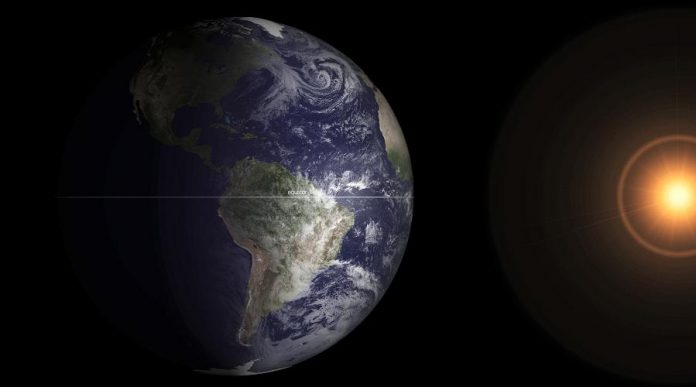Spring officially arrives on Tuesday, March 20, 2018 at 12:15 p.m.
The arrival of spring in the northern hemisphere is marked by the vernal equinox: the moment when the earth’s axis is perpendicular to the sun, so the sun’s rays shine directly on the equator.
There’s an equinox in the spring and another in the fall, the difference being whether the sun’s rays are crossing the equator into the northern hemisphere (spring) or into the southern hemisphere (fall).

The word equinox comes from the Latin words for “equal” and “night”, but it doesn’t mean there are actually equal hours of day and night.
At sunrise and sunset, it’s still light even though the centre of the sun’s disk is below the horizon … so there are always a few more minutes of daylight than night on the vernal equinox.
However, the vernal equinox does marks the day when we begin to get more hours of daylight than night, as the northern hemisphere increasingly tilts towards the sun.
Daylight hours continue to increase until the summer solstice — the longest day of the year and the official beginning of summer — which occurs this year on Thursday, June 21 at 6:07 a.m.

Spring is celebrated with festivals around the world, including Holi (“festival of colours”) in India, the Chinese New Year, and Passover and Easter in western culture.
Easter — Good Friday this year falls on Friday, March 30th — began as a pagan festival celebrating the return of life in the northern hemisphere. After the advent of Christianity, it became associated with the resurrection of Christ.
However, remnants of Easter’s pagan roots can be seen in the symbols of fertility we associate with the holiday: rabbits and eggs.




























